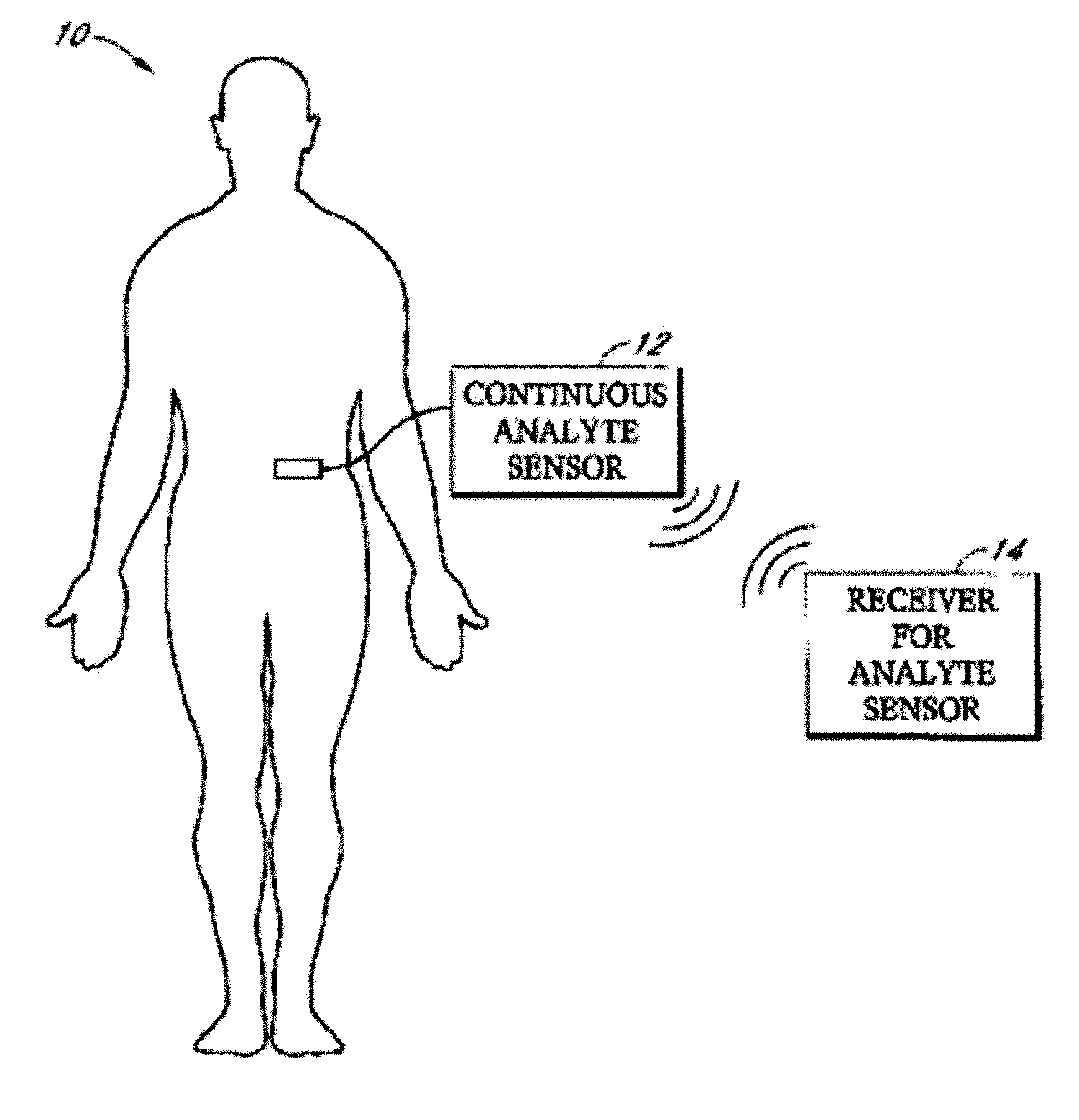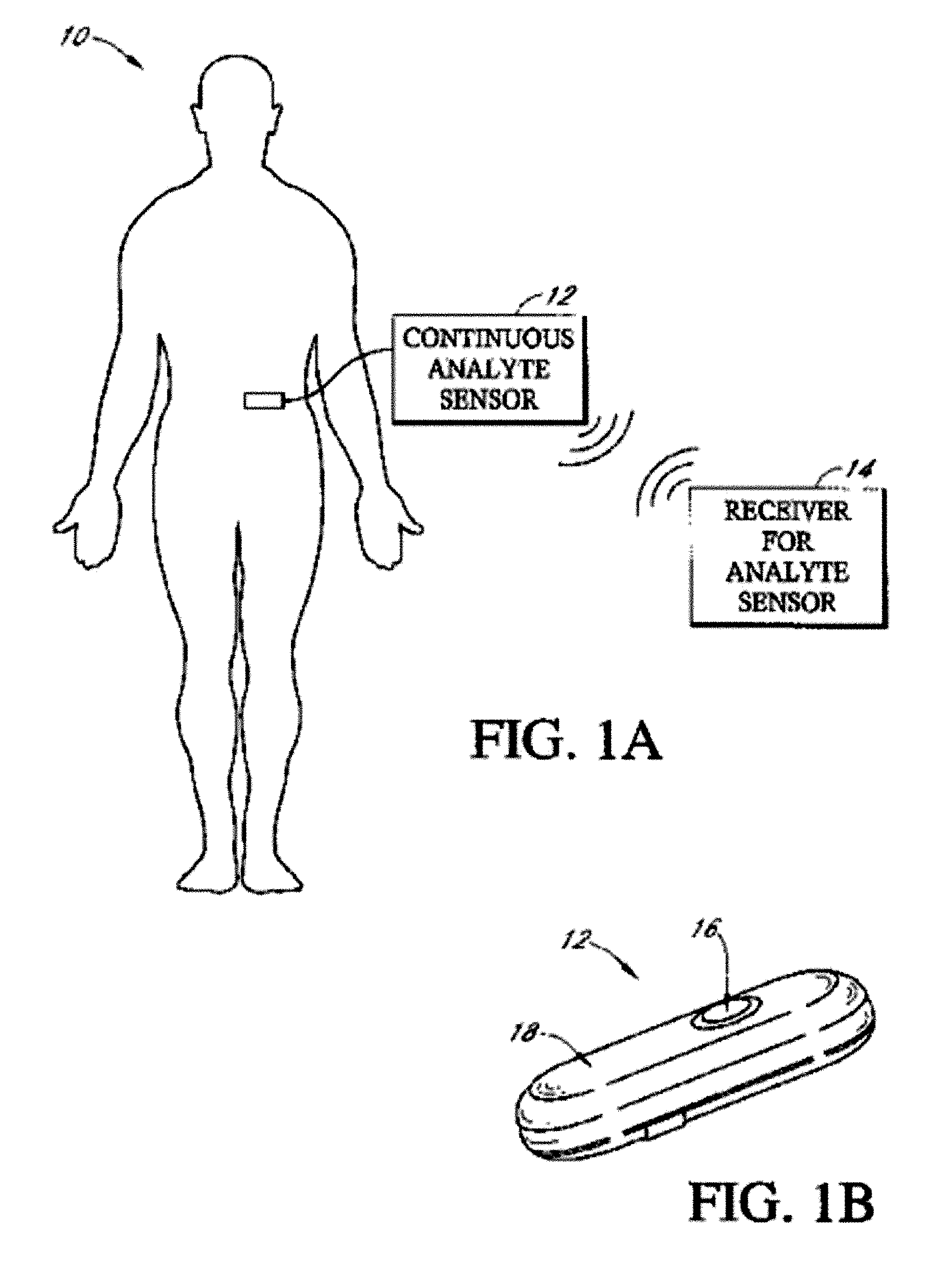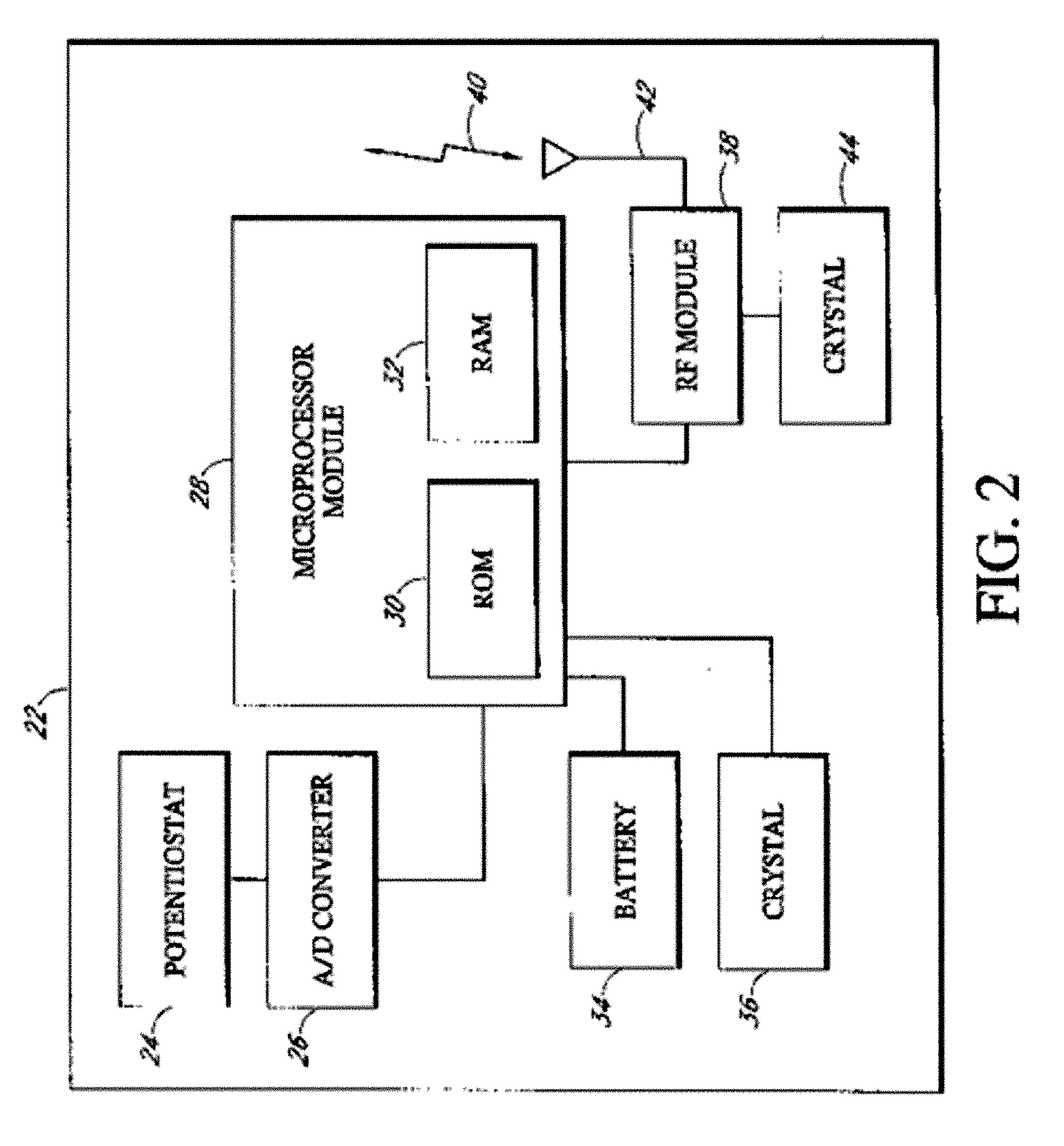Implantable analyte sensor
an analyte sensor and sensor technology, applied in the field of analyte sensors, can solve the problems of inability to make educated insulin therapy decisions, lack of continuous care (short-term sensors), and likely diabetes, and achieve accurate and reliable functions, improve patient convenience and car
- Summary
- Abstract
- Description
- Claims
- Application Information
AI Technical Summary
Benefits of technology
Problems solved by technology
Method used
Image
Examples
first embodiment
[0006] Accordingly, in a first embodiment, an implantable analyte sensor for measuring an analyte in a host is provided, the sensor including: a sensor body including a sensing region for measuring the analyte and a non-sensing region for immobilizing the sensor body in the host; a first biointerface material adjacent to the sensing region, wherein the first biointerface material includes a porous architecture that promotes vascularized tissue ingrowth and interferes with barrier cell layer formation, for allowing analyte transport to the sensing region in vivo; and a second biointerface material adjacent to at least a portion of the non-sensing region, wherein the second biointerface material includes a porous architecture that promotes tissue ingrowth for anchoring the sensor in vivo.
[0007] In an aspect of the first embodiment, the first biointerface material further includes a domain proximal to the sensing region that is impermeable to cells or cell processes and is permeable to...
second embodiment
[0010] In a second embodiment, an analyte sensor for short-term and long-term immobilization in a host’s soft tissue is provided, the sensor including: a short-term anchoring mechanism for providing immobilization of the sensor in the soft tissue prior to substantial formation of the foreign body capsule; and a long-term anchoring mechanism for providing immobilization of the sensor in the soft tissue during and after substantial formation of the foreign body capsule.
[0011] In an aspect of the second embodiment, the short-term anchoring mechanism includes a suture tab on the sensor body. In an aspect of the second embodiment, the short-term anchoring mechanism includes a suture. In an aspect of the second embodiment, the short-term anchoring mechanism includes at least one of prongs, spines, barbs, wings, and hooks. In an aspect of the second embodiment, the short-term anchoring mechanism includes a geometric configuration of the sensor body. In an aspect of the second embodimen...
third embodiment
[0013] In a third embodiment, a method for immobilizing an analyte sensor in soft tissue is provided, the method including: implanting the analyte sensor in a host; anchoring the sensor in the host prior to formation of a foreign body capsule for at least short-term immobilization of the sensor within the soft tissue of the host; and anchoring the sensor within the foreign body capsule for long-term immobilization of the sensor within the soft tissue of the host.
[0014] In an aspect of the third embodiment, the short-term immobilization step includes suturing the sensor to the host’s tissue. In an aspect of the third embodiment, the suturing step includes suturing the sensor such that the sensor is in compression. In an aspect of the third embodiment, the short term immobilization step includes utilizing at least one of prongs, spines, barbs, wings, and hooks on the sensor to anchor the sensor into the host’s tissue upon implantation.
[0015] In an aspect of the third embodiment, the...
PUM
| Property | Measurement | Unit |
|---|---|---|
| time period | aaaaa | aaaaa |
| time period | aaaaa | aaaaa |
| thickness | aaaaa | aaaaa |
Abstract
Description
Claims
Application Information
 Login to View More
Login to View More - R&D
- Intellectual Property
- Life Sciences
- Materials
- Tech Scout
- Unparalleled Data Quality
- Higher Quality Content
- 60% Fewer Hallucinations
Browse by: Latest US Patents, China's latest patents, Technical Efficacy Thesaurus, Application Domain, Technology Topic, Popular Technical Reports.
© 2025 PatSnap. All rights reserved.Legal|Privacy policy|Modern Slavery Act Transparency Statement|Sitemap|About US| Contact US: help@patsnap.com



